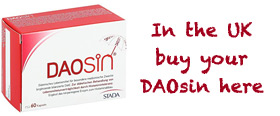|
|
Bread - the staff of life or what makes us ill? |
|
Andrew Whitley, founder of the Village Bakery and author of a seminal new book, Bread Matters, investigates the good, the bad and the ugly of modern bread-making. |
The Egyptians paid it as wages. To the Romans it was a form of dole. Starved of it, French peasants made a revolution. Modern versus traditional Modern bread is different in several respects from all the bread ever consumed by human beings until at least the latter half of the nineteenth century. The grain, the method of milling and the way the flour is turned into bread – all have changed in response to the economic pressures of industrialisation and technological developments in plant breeding, agronomy, milling and baking. Intolerance and sensitivity In 2000 a Scandinavian study of people presenting with abdominal complaints after eating cereals found positive reactions to cereal allergy tests in 20%. The research clearly identified a wheat sensitivity that is different from coeliac disease. There is even a condition known as 'wheat-dependent exercise-induced anaphylaxis'. Wheat Ever since early wheat species emerged from North West India and Ethiopia over 8,000 years ago, the nature of the plant has been evolving. Climate and soil were the main determinants and for most of history farmers could do little more than choose from variations that occurred through environmental pressure and chance Mineral deficiency Dr Howarth Bouis of the International Food Policy Research Institute states that 'over half of the world's population' is affected by micronutrient deficiencies. Not all of these people are the poor of developing countries. For those on the limits of food security, or on the verge of obesity, the nutrient density of each grain of wheat and therefore each mouthful of bread, affects their health chances. Anti-nutrients And that’s not all. As well as lowering mineral content, plant breeders may inadvertently have increased the levels of potential anti-nutrients in wheat. The bread-making quality of wheat (i.e. its ability to make a stretchy dough) is related to its protein content and in particular to certain fractions of gliadin and glutenin within the protein. In selecting wheat to make ‘better’ dough, the breeders seem to have increased the levels of those gliadins and glutenins that are most problem-atic for coeliacs and those with wheat intolerance. Milling Until the widespread adoption of roller milling in the 1870s, all flour was produced by crushing wheat between revolving stones. Whereas stone milling followed by sieving had generally ‘extracted’ a white flour In refining whole wheat to 70% extraction white flour, many important vitamins and minerals are seriously depleted. For example, vitamin B1 declines by 77%, B2 by 80%, E by 86%, calcium by 60%, magnesium by 84%, iron by 76% and zinc by 78%. (1) Whatever the plant breeders, farmers and millers have done to the grain, the industrial bakers seem to have made things worse. The so-called Chorley-wood Bread Process (CBP), invented in 1961, is used to make 80% of British bread (and much of the rest uses similar additives). The CBP departed from traditional methods by using a good deal more yeast (three or four times as much as before), a clutch of chemical additives and enzymes and little or no fermentation time. Additives & enzymes From the poisons and adulterants of the eighteenth century to the ‘crumb softeners’ of today, bakers have constantly sought to extract more ‘value’ from flour than it seemed prepared to give. Time Lactic acid bacteria LAB can improve the ‘bioavail-ability’ of minerals, lower glycaemic response (which is good for weight and diabetes control), increase the amount of important vitamins and anti-oxidants and help reduce levels of phytic acid, which can ‘lock up’ certain minerals. Coeliacs But most dramatically, Italian scientists (3) have demonstrated, What can be done? We need to agree minimum nutritional standards for breadmaking wheat. We need millers to make flours of wide appeal that conserve more of the nutrients naturally present in the grain. And we need industrial bakers to come clean about what really goes into their bread. Andrew Whitley’s book Bread Matters – the state of modern bread and a definitive guide to baking your own is published by Fourth Estate at £20. www.breadmatters.com First published in 2006 |












